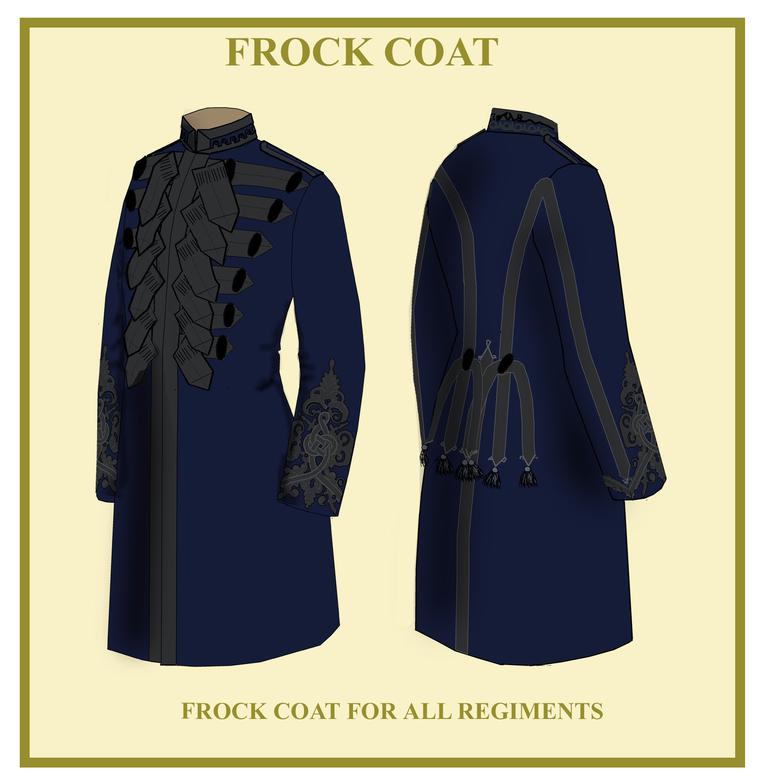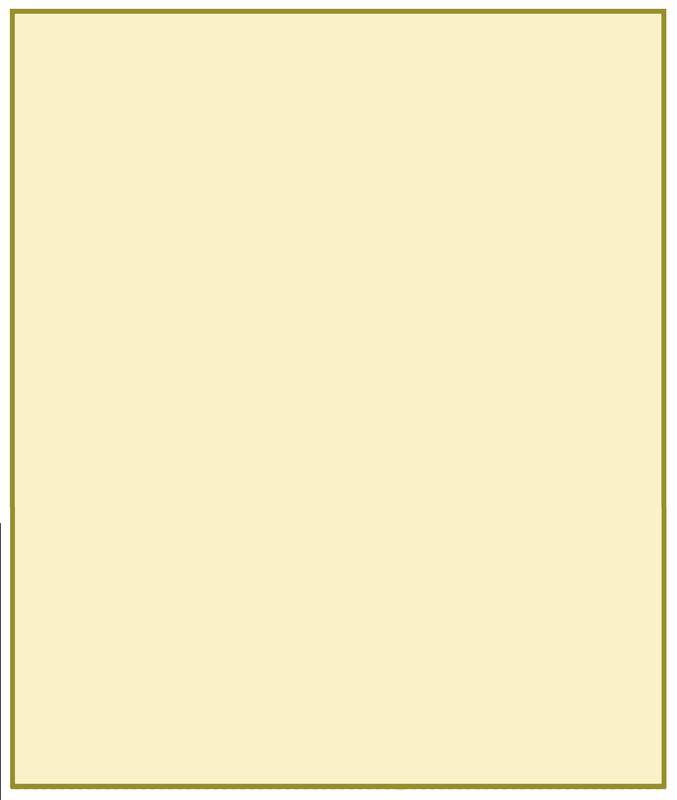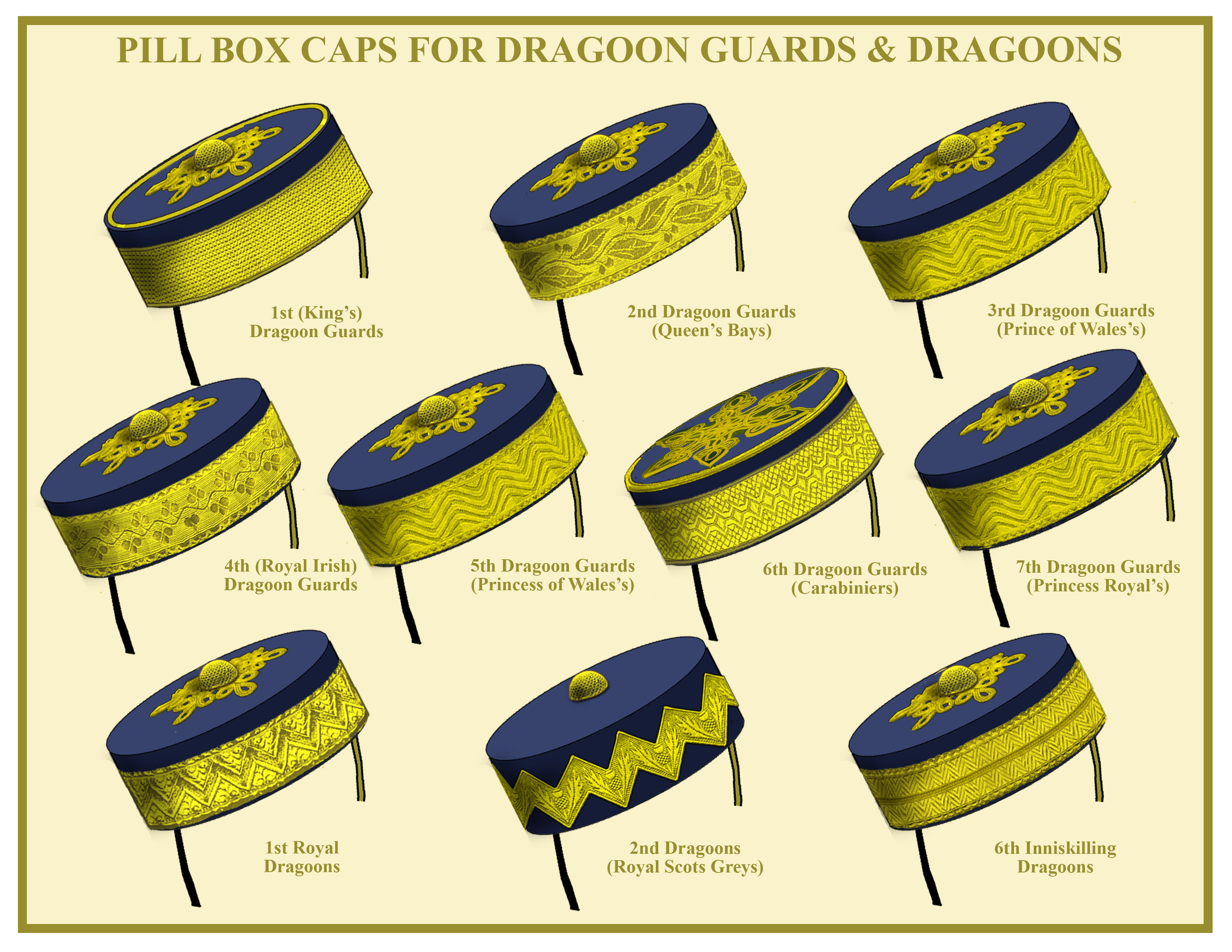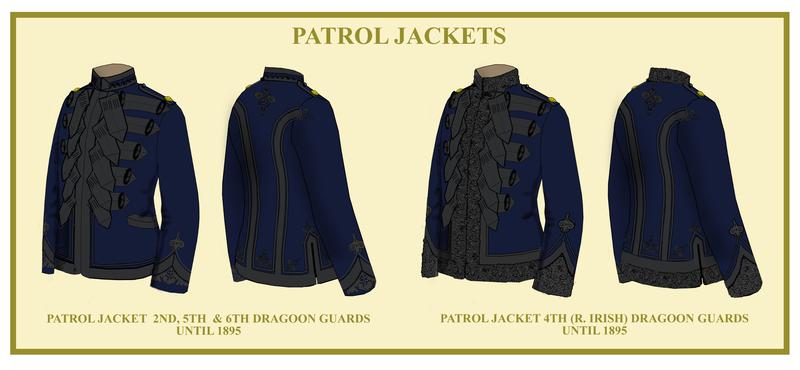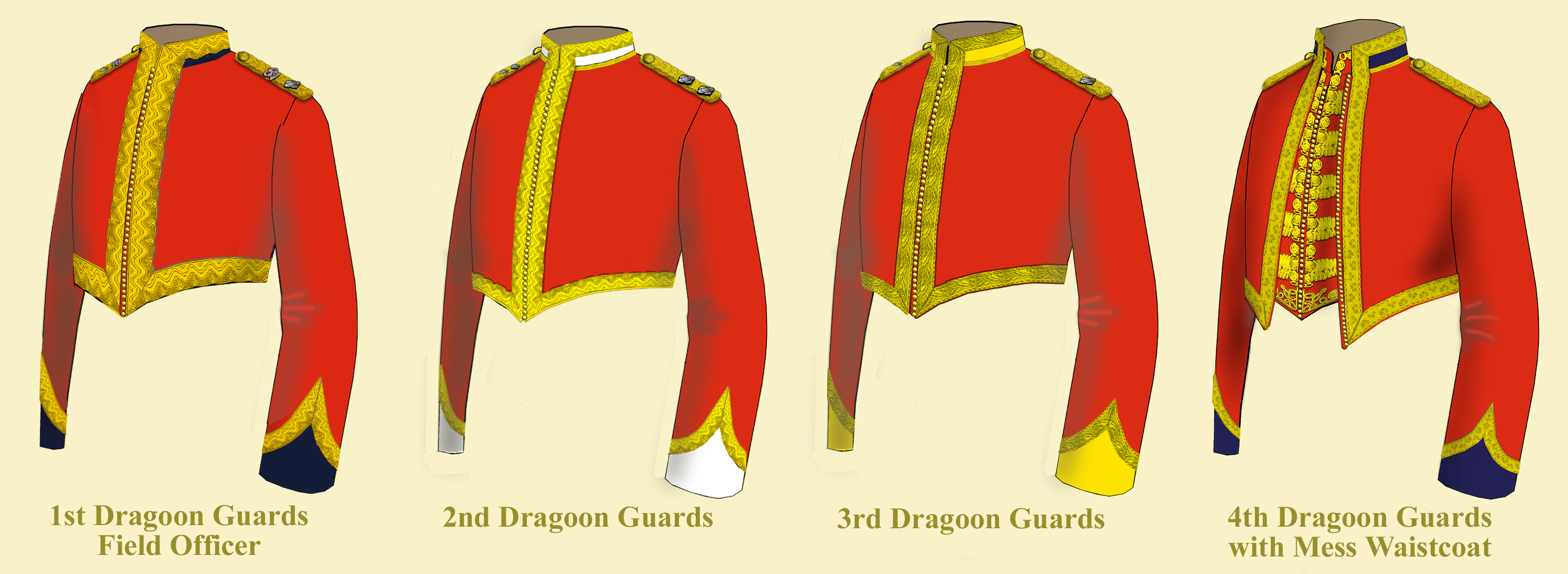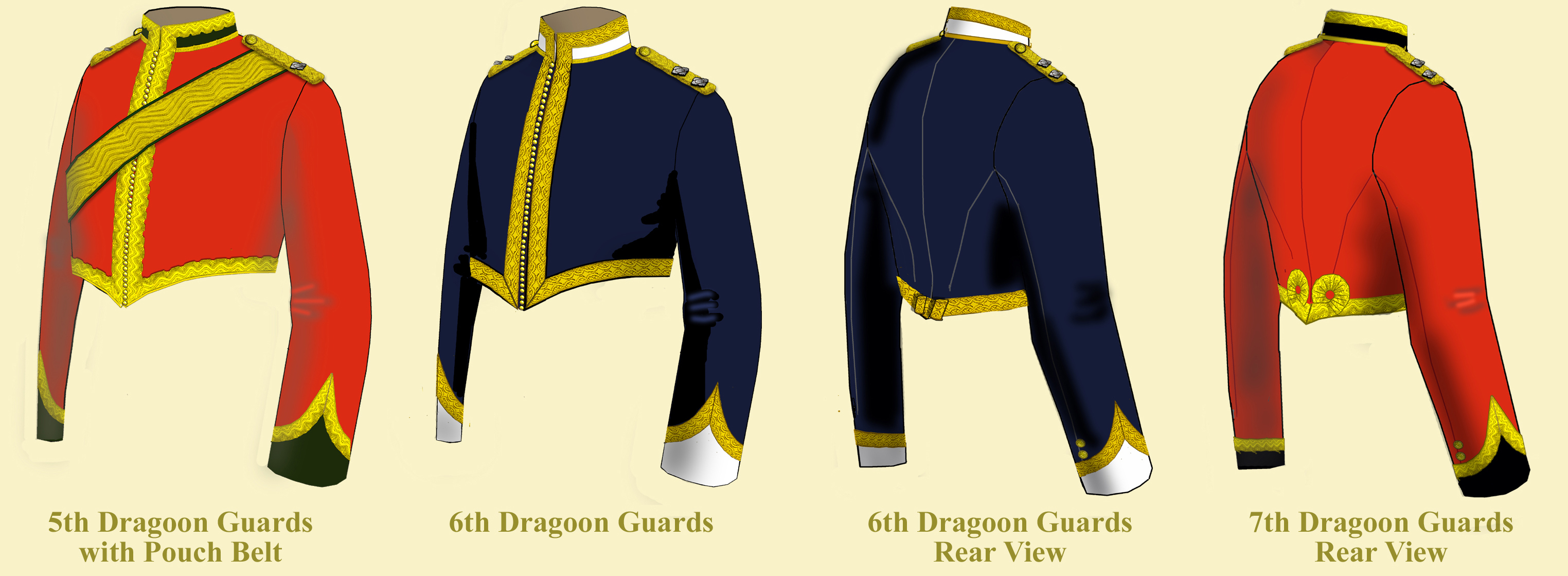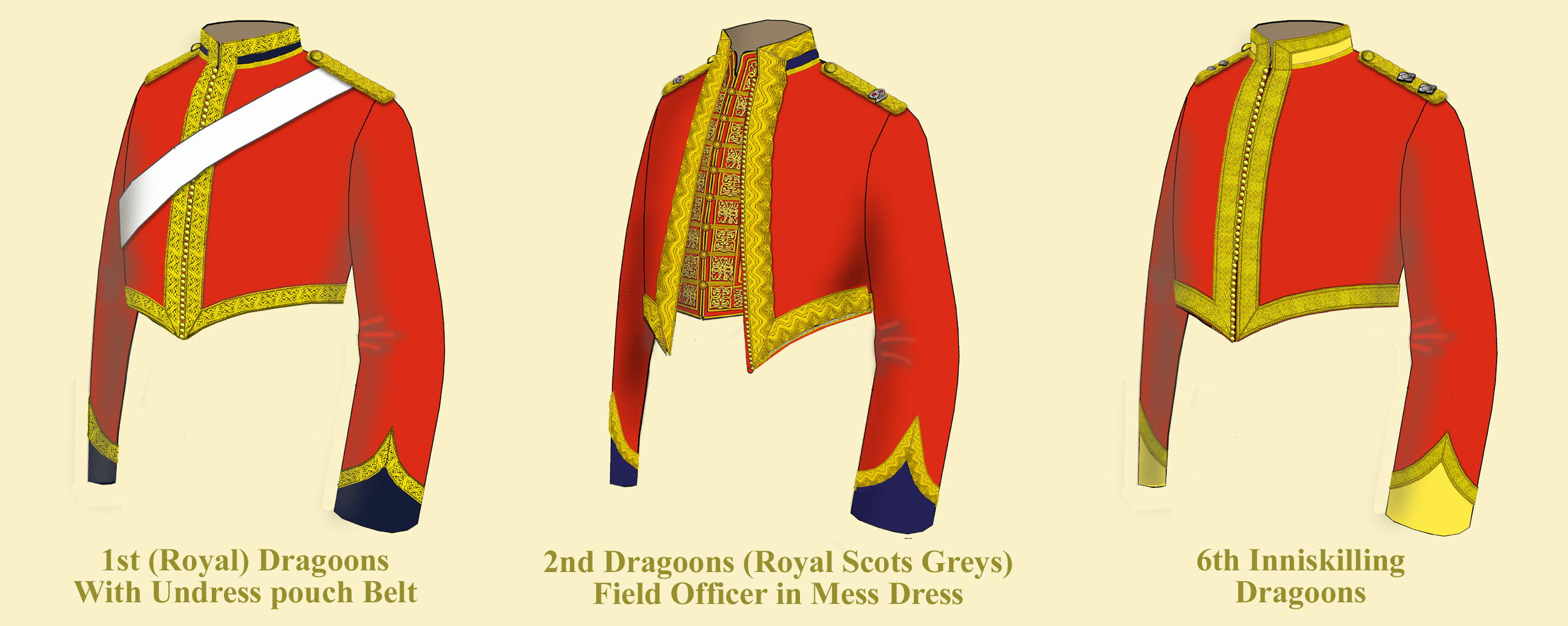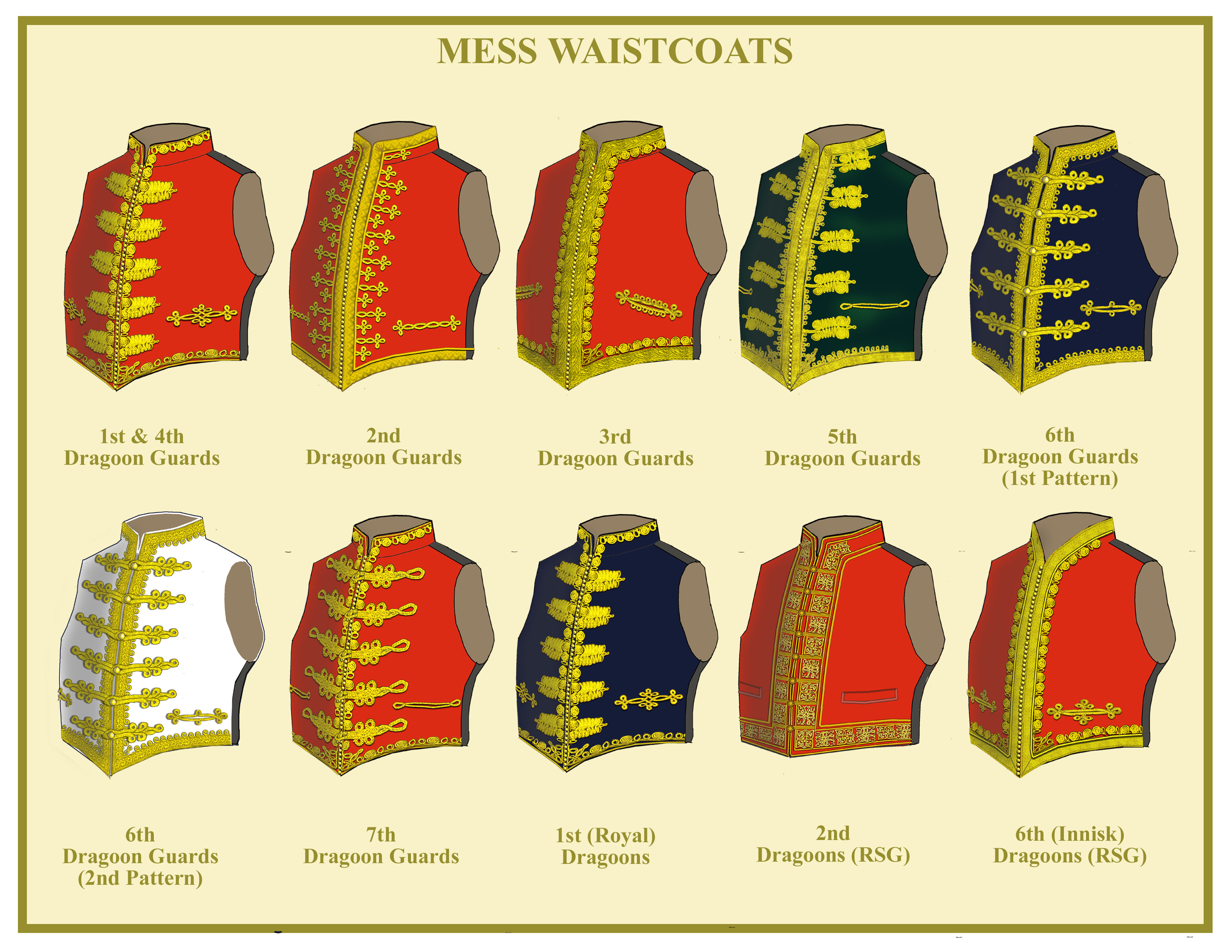THE FROCK COAT
The long skirted blue frock coat had been an item of undress for British Army officers since just after the Napoleonic Wars. It was originally a plain single breasted garment that had become double breasted by the time of the Crimean War. By the mid eighteen-sixties the cavalry version diverged from those of the other branches when it became decorated with black mohair cord loops across the front and on the cuffs. In the seventies it evolved again by the loops and braiding becoming flat and assuming the form it would take until it was abolished. After the
introduction of the patrol jacket in 1868 both items were worn with the frock coat being worn on more formal undress occasions than the patrol jacket. By 1881 the frock coat was only being worn by the heavy cavalry with hussars and lancers wearing the patrol jacket instead.
The coat worn by Dragoon Guards and Dragoons was similar to that worn by the Household Cavalry and differed in the cuff lace and the decorations on the rear. It had six one inch flat loops with drops worn across the chest and pointed loops on the sleeve. There was lace also on the back seams of the arms and back extending down from the waist with tassels on the end.
PATROL JACKETS
The patrol jacket introduced in 1868 was to be worn in quarters, on leave or in town when not on duty. It was not to be worn with sword belt or sword or on campaign or on peace manoeuvres. As usual, such prohibitions were often ignored. There was no insignia except rank badges allowed on it. The jacket appears to have been inspired by the uniforms of French officers in the Crimea and afterwards in the Franco-Prussian War. By the mid-seventies, especially in the cavalry, it had acquired black lambskin trimming to the front, collar and cuffs in addition to mohair braid to create an appearance that would carry it to the end of the century when it was abolished. (In the author’s opinion, it was the most attractive item worn by British officers).
The 1881 Dress regulations describe a patrol jacket for the 2nd, 5th and 6th Dragoon Guards only, the others supposedly only wearing the frock coat. But the 4th (Royal Irish) Dragoon Guards pattern was not mentioned although contemporary prints show that they wore their fur trimmed patrol jacket well into the 1890s. By 1900 there is no mention of patrol jackets for the heavy cavalry.
STABLE JACKETS & MESS DRESS
The stable jacket, or shell jacket was another item of long standing in the British Army. It had been worn y both officers and men since before the end of the Napoleonic Wars. It would change very little until it was finally abolished. In 1881 it was worn for duties within the barracks or for riding exercises and of course for mess dress. On duty it was worn with either full dress or white undress pouchbelt and with sword, sword belt, slings and sabretache. In the mess, it was worn with regimental mess waistcoat. In 1896 it was discontinued as a duty item and reserved for mess dress only as it was described in the 1900 regulations.
The jacket was scarlet for all regiments except the 6th Dragoon Guards who wore blue. It was edged round the collar, down the front, around the bottom and on the pointed cuffs with regimental gold lace.(1 inch for junior officers, 1 ½ inch for field officers). The lace formed eyes on each side of the lower rear edge. In the 6th Dragoon Guards these formed dummies.
HEAVY CAVALRY UNIFORMS, ARMS & EQUIPMENT - DRAGOON GUARDS & DRAGOONS
The mess vest or waistcoat was entirely of regimental pattern. It was generally scarlet with gold lace figuring down the front and low collar. The 1st and 4th Dragoon Guards had the same pattern as did the Royal Dragoons but on a very dark blue ground. The 5th Dragoon Guards had a beautiful dark green velvet waistcoat and the Carabiniers had two patterns during the period, one blue with five loops and later a white one with six. The 3rd Dragoon Guards and the Inniskillings had similar vests, the latter with an open collar. The most unique of all the heavy cavalry waistcoats was that of the Royal Scots Greys with its square lace panel edging.
UNDRESS UNIFORMS
FORAGE CAPS
The soft topped forage cap with gold band and drooping leather peak was replaced after the Crimean War with the pillbox cap. At first it was basically the old cap without the peak and from contemporary photographs it appears to have been worn more squarely on the head than in later years when it had become decidedly smaller. By 1881 the pillbox had reached its final form and was according to regulations to be 2 5/8 in high with a band of 1 ¾ in gold lace and a black patent leather chinstrap. There was a netted button with gold lace figuring at the top.. The regulations did not dictate its manner of wear, but convention determined it should be worn at an angle of 25 degrees.
Most regiments had their individual lace patterns but the 3rd, 5th and 6th Dragoon Guards had the same wavy pattern. The 1st and 6th Dragoon Guards were the only heavy cavalry to have a gold lace edging to the crown and the Royal Scots Greys had their unique vandyked pattern. The crown featured the same eight pointed figure for all regiments except the 6th Dragoon Guards that had a special pattern and the Royal Scots Greys that had simply the button. The cap was abolished in 1901.
